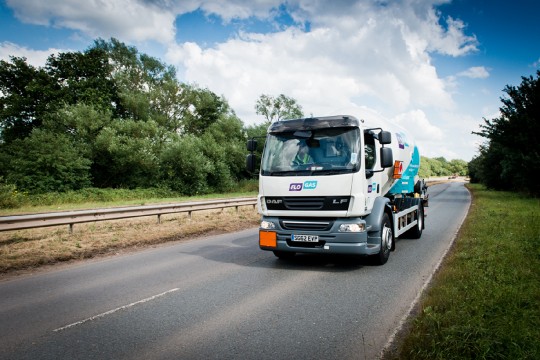Installing LPG Bulk Tanks
If you’re running an off-grid business, ensuring a consistent, reliable energy supply is paramount to your success. The more energy you use, the more vital it is to have a source of energy that is not only cost-efficient, but that allows hassle free ordering, and a reliable and consistent energy supply.
So if you’re smart, you’ve probably already made the decision to power your business with LPG (liquefied petroleum gas), as opposed to oil, as it offers lower levels of CO2, nitrous oxides (NOx), sulphur oxides (SOx) and particulate matter (PM), helping you reduce your emissions and allowing you to remain compliant with government legislation.[1]
Once you’ve made the decision to use LPG, you need to choose a supplier that provides a reliable supply, superior customer service and that works with you to plan and manage the installation process.
Here you have two options, bulk LPG, or LPG cylinders. For those with limited space, cylinders are a great solution. For those with space available, and wanting an above or underground LPG tank, we’ve been speaking to one of the UK’s leading LPG suppliers, Flogas Britain, to find out some of the things you need to consider.[2]

Positioning
The most important thing to consider when positioning an LPG bulk tank is its distance from nearby buildings, boundaries, trees, or sources of ignition like electrical equipment. Known as the ‘separation distance’, the minimum requirement will vary depending on capacity of the tank, and whether or not a fire wall is in place. Additionally, if you have more than one tank, there needs to be a minimum separation distance between them.[1]
Depending on your site, you may want to locate the tanks underground, so they can’t be seen. This is particularly relevant if you’re operating off-grid hospitality venues like hotels and restaurants or building rural housing estates.
Access
LPG bulk tanks will need to be filled by road tanker, with the regularity dependent on the capacity of your tanks and level of usage. The tankers need easy and clear access, which our team of experts can advise you on. We always advise that the area where the tank is situated is well maintained and clear from rubbish and overgrown grass, plants, or weeds.

Safety and Security
Although a very safe fuel, LPG is flammable, so any potential sources of ignition must be kept away from the tanks. As a result, the tanks must be in an area with no access to other vehicles, site visitors, or unauthorised workers. Electrical equipment can’t be used near the tanks, and open ignition sources like bonfire or barbeques must also be kept at a safe distance. Of course, smoking is also prohibited anywhere near the tanks.
What Happens Next?
Installing an LPG system or converting from oil to LPG is very straightforward if you choose the right supplier. Flogas Britain, for example, will work with you to design, plan, manage and implement your installation, and will then supply your LPG as well as maintain the tanks and pipework.
Flogas’ internal technical team design bespoke energy solutions to match the energy requirements for your business. They’ll even dispose of your old oil tanks if you’re switching fuels. You’ll have a dedicated account manager on hand throughout the entire switching process, and Flogas will ensure your business has minimal downtime. Whichever supplier you choose, keeping these points in mind will help you begin your LPG journey.
[1] SAP 2012
[2] www.hse.gov.uk/gas/lpg/storagetank.htm
[3] www.hse.gov.uk/gas/lpg/separationdistances.htm



